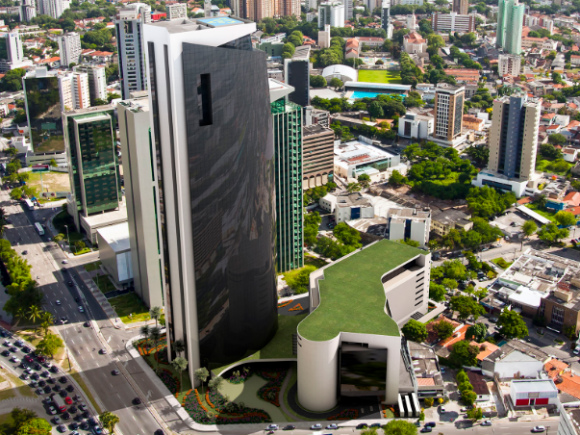Inspired by Copenhagen: Municipal Council of Recife, Brazil approves Green Roof Law
On 16 December 2014, the Municipal Council of Recife, Brazil, approved the Green Roof Law. This law requires buildings with more than four floors to have their roofs covered with native vegetation. The law also applies to any commercial building with more than 400 square meters.
The first example of a building with a “green roof” in Recife will be the Torre Charles Darwin, a 35-storey building under construction in the center of the city. The building will have a cover crop of 2.8 million square feet, along with a tank to capture rainwater, which will be used to power the air conditioning system.
Evelyne Labanca, the President of the Planning Institute and one of the participants in the Urban-LEDS European technical studies visit in April 2014, was responsible for coordinating the project. She explained that the Copenhagen Green Roofs project was the inspiration for the new law in Recife.
This initiative builds on previous work in Recife. Recife is one of two Urban-LEDS model cities in Brazil. As much as 46 percent of Recife’s total area is green, 60 percent of which is protected under conservation laws. An Urban Afforestation plan aims at preserving and increasing this unique environment. The Apibaribe River Navigability Project is focused on ensuring that the six rivers and 66 canals of the city are used as alternative sustainable routes. A planned increase in bike lanes and the creation of bus corridors to facilitate commuters and reduce private transport are other initiatives undertaken by the city government to reduce its impact on the environment and overall CO2 emissions.
Source: ICLEI Local Government for Sustainability
For more information, please read the Recife entries on ICLEI's CityTalk blog.





